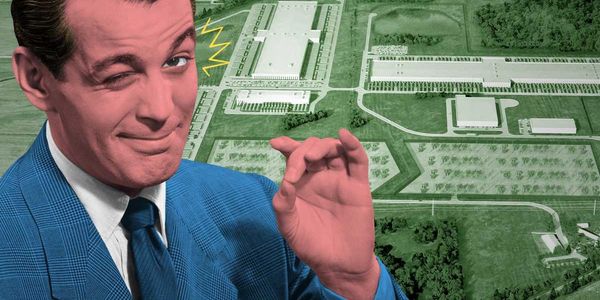Trump Cuts Solar Industry’s Experiments to Win Hearts and Minds

This week I spoke with David Gahl, executive director of the Solar and Storage Industries Institute, or SI2, which is the Solar Energy Industries Association’s independent industry research arm. Usually I’d chat with Gahl about the many different studies and social science efforts they undertake to try and better understand siting conflicts in the U.S.. But SI2 reached out first this time, hoping to talk about how all of that work could be undermined by the Trump administration’s grant funding cuts tied to the government shutdown. (The Energy Department did not immediately get back to me with a request for comment for this story, citing the shutdown.)
The following conversation was edited lightly for clarity.
So what SI2 funding could be cut because of the federal shutdown, and what has it been put toward?
On October 1, the Energy Department put out a list of about $7.5 billion in grants they were terminating. Approximately a week later, another larger list of grants that were slated for termination found its way into the press. There’s an outstanding question about what this other list floating around means, and only DOE can verify the document’s accuracy, but we have two projects that were on that bigger list.
The first was $2.5 million supporting research into how power companies engage communities. We were coming up with a list of community engagement innovations — the idea was to actually test, through rigorous social science research at project sites, which of these innovations produces the best outcomes. We were going to have empirical data that said, If you approach communities in this way you’re more likely to get support, and if you approach communities this other way you wouldn’t.
The second was $3 million to bring diverse stakeholders together to talk about siting and permitting reform, best practices, guidance to make development smoother. The concept there was to bring traditionally warring parties to come up with a framework and tools to help the siting process. If you can get people together to come up with best practices, you can typically move things faster.
This was an “uncommon dialogue” – there was “uncommon dialogue” before on hydropower resources – and this was related to large-scale solar facilities and conservation. It’s not location-specific, more bringing the groups together to talk about a higher level set of issues, not specific projects. Keep in mind, this is relatively small potatoes.
What was the status of that work?
It started earlier in the year and it’s been rolling along. There’s been a lot of progress made so far. People have developed work plans and are working through the issues.
If the funding is canceled, there’s also opportunity for private money to potentially step in, but it puts both initiatives in a precarious place. But to the broader point, the administration has talked about how it wants energy “abundance” and more electrons on the grid to meet growing demand. And these projects funded by the department are addressing key problems to putting electrons onto the grid. Cancellation of these grants is just a complete reversal of what they’re talking about in other forums.
How so? Help me understand how this work actually trickles down to individual project decisions.
One of the challenges with siting any kind of large-scale energy project is getting community buy-in and ensuring the permitting process moves smoothly, that parties aren’t going to be litigating against each other. So if you can come up with ways to make sure the communities feel heard and are designed according to what communities want, you can probably avoid some litigation down the road.
Do you have any indication this government supports the work you’re describing?
What they’ve made clear is they want more electrons to come onto the grid to support data centers and the advancement of artificial intelligence. Canceling grants like these … I mean, we’re talking about potentially canceling projects that make it harder to meet the goal of putting more electricity onto the grid.








